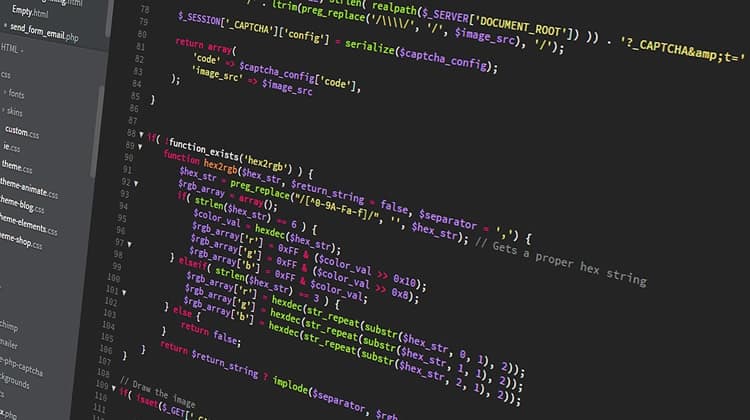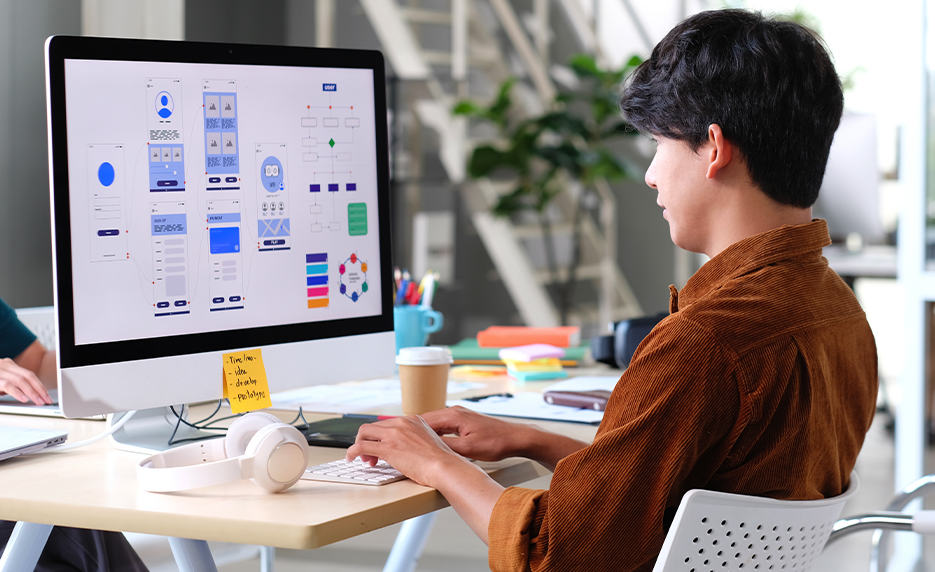All Categories
Featured
Table of Contents
- – What Is Web Design, How To Do It Right And Bes...
- – Figma: The Collaborative Interface Design Too...
- – Beginner's Guide: How To Learn Web Design At ...
- – Lifted Logic: Web Design In Kansas City - Seo...
- – Law Firm Website Design, Attorney Web Design,...
- – The Leader In Website Design – Squarespace Ti...
- – Boxcar Studio - Wordpress & Drupal Web Desig...
- – Indianapolis Web Design And Digital Marketin...
- – Minneapolis Web Design - 100+ Five Star Revi...
- – Powderkeg: Web Design Madison, Wi Tips and T...
- – Top Web Design Agencies Ranked - 2022 Review...
What Is Web Design, How To Do It Right And Best Skills - Rock ... Tips and Tricks:
Quick summary Functionality and the utility, not the visual design, identify the success or failure of a site. Given that the visitor of the page is the only person who clicks the mouse and therefore chooses whatever, user-centric design has established as a basic approach for effective and profit-oriented web style - web design frederick md.
and the energy, not the visual design, identify the success or failure of a site. Because the visitor of the page is the only individual who clicks the mouse and for that reason decides everything, user-centric style has actually become a standard technique for effective and profit-oriented web design. After all, if users can't use a feature, it may too not exist.
g. where the search box must be positioned) as it has actually already been carried out in a variety of posts; instead we focus on the techniques which, used effectively, can lead to more sophisticated design decisions and streamline the process of perceiving provided info. Please see that you might be thinking about the usability-related short articles we have actually published before: Concepts Of Excellent Site Design And Effective Web Design Guidelines, In order to utilize the concepts effectively we initially require to understand how users connect with websites, how they think and what are the fundamental patterns of users' habits.
Figma: The Collaborative Interface Design Tool. Tips and Tricks:
Visitors glance at each brand-new page, scan a few of the text, and click the very first link that catches their interest or slightly resembles the important things they're looking for. In fact, there are big parts of the page they don't even take a look at. A lot of users look for something intriguing (or beneficial) and clickable; as quickly as some appealing prospects are found, users click.
If a page offers users with high-quality content, they are willing to jeopardize the material with advertisements and the design of the website. This is the reason not-that-well-designed websites with high-quality material acquire a lot of traffic over years. Material is more vital than the design which supports it.

Users do not check out, they scan. Notice how "hot" locations abrupt in the middle of sentences. This is common for the scanning procedure. Really simple principle: If a site isn't able to satisfy users' expectations, then designer failed to get his job done correctly and the business loses cash. The higher is the cognitive load and the less intuitive is the navigation, the more ready are users to leave the website and look for options.
Beginner's Guide: How To Learn Web Design At Home - Medium Tips and Tricks:
Neither do they scan webpage in a direct fashion, going sequentially from one site section to another one. Rather users satisfice; they choose the very first sensible choice. As quickly as they find a link that appears like it might result in the objective, there is an excellent chance that it will be immediately clicked.
It does not matter to us if we understand how things work, as long as we can utilize them. If your audience is going to imitate you're developing billboard, then style terrific billboards." Users wish to be able to manage their internet browser and depend on the constant information discussion throughout the site.
If the navigation and website architecture aren't intuitive, the number of enigma grows and makes it harder for users to comprehend how the system works and how to get from point A to point B. A clear structure, moderate visual hints and quickly identifiable links can help users to find their path to their aim.
Lifted Logic: Web Design In Kansas City - Seo - Website ... Tips and Tricks:
Because users tend to explore websites according to the "F"-pattern, these three declarations would be the first aspects users will see on the page once it is loaded. The style itself is basic and instinctive, to understand what the page is about the user needs to browse for the answer.
When you've achieved this, you can communicate why the system works and how users can gain from it. Individuals won't utilize your web website if they can't discover their way around it. 2. Don't Misuse Users' Perseverance, In every project when you are going to use your visitors some service or tool, attempt to keep your user requirements minimal.
Newbie visitors want to, not filling long web kinds for an account they might never utilize in the future. Let users explore the site and find your services without requiring them into sharing private information. It's not affordable to require users to get in an e-mail address to check the feature.
Law Firm Website Design, Attorney Web Design, Lawyer ... Tips and Tricks:
Stikkit is an ideal example for an easy to use service which requires almost absolutely nothing from the visitor which is inconspicuous and soothing. Which's what you desire your users to feel on your web website. Obviously, Termite requires more. Nevertheless the registration can be carried out in less than 30 seconds as the type has horizontal orientation, the user doesn't even require to scroll the page.
A user registration alone is enough of an obstacle to user navigation to cut down on incoming traffic. Manage To Focus Users' Attention, As websites supply both fixed and dynamic material, some elements of the user interface bring in attention more than others do.
Focusing users' attention to particular locations of the site with a moderate use of visual elements can help your visitors to get from point A to point B without thinking of how it actually is supposed to be done. The less enigma visitors have, the they have and the more trust they can establish towards the business the website represents.
The Leader In Website Design – Squarespace Tips and Tricks:
4. Pursue Feature Exposure, Modern website design are normally criticized due to their approach of assisting users with aesthetically appealing 1-2-3-done-steps, large buttons with visual results and so on. From the design perspective these elements really aren't a bad thing. On the contrary, such as they lead the visitors through the site material in an extremely basic and user-friendly method.
The website has 9 main navigation options which show up at the first glimpse. The choice of colors may be too light, though. is a fundamental concept of effective interface design. It does not really matter how this is attained. What matters is that the material is well-understood and visitors feel comfortable with the method they engage with the system.
com gets straight to the point. No charming words, no overemphasized statements. Instead a rate: just what visitors are trying to find. An ideal service for reliable writing is touse short and concise expressions (come to the point as quickly as possible), use scannable layout (classify the material, use multiple heading levels, use visual aspects and bulleted lists which break the flow of consistent text blocks), use plain and unbiased language (a promo doesn't need to seem like ad; give your users some sensible and objective reason that they should use your service or remain on your website)6.
Boxcar Studio - Wordpress & Drupal Web Design ... - Ann Arbor Tips and Tricks:
Users are seldom on a site to delight in the design; furthermore, in many cases they are searching for the information despite the style - web design frederick md. Make every effort for simplicity instead of complexity. From the visitors' point of view, the finest site design is a pure text, with no advertisements or additional content blocks matching precisely the inquiry visitors used or the material they have actually been trying to find.
Finch clearly provides the information about the website and offers visitors a choice of alternatives without overcrowding them with unnecessary content. Not just does it assist to for the visitors, however it makes it possible to perceive the info provided on the screen.
Complex structures are harder to check out, scan, analyze and work with. If you have the option in between separating 2 design sectors by a noticeable line or by some whitespace, it's generally much better to use the whitespace service. (Simon's Law): the better you manage to supply users with a sense of visual hierarchy, the easier your material will be to view.
Indianapolis Web Design And Digital Marketing Agency Tips and Tricks:
The exact same conventions and rules ought to be used to all elements.: do the most with the least amount of hints and visual components. Clarity: all components should be created so their meaning is not unclear.
Conventions Are Our Good friends, Standard style of site aspects does not result in a dull website. As they reduce the finding out curve, the requirement to figure out how things work. It would be an usability problem if all sites had different visual discussion of RSS-feeds. That's not that various from our regular life where we tend to get utilized to fundamental principles of how we arrange data (folders) or do shopping (positioning of products).
understand what they're getting out of a website navigation, text structure, search placement etc. A common example from use sessions is to equate the page in Japanese (assuming your web users do not understand Japanese, e. g. with Babelfish) and supply your use testers with a task to find something in the page of different language.
Minneapolis Web Design - 100+ Five Star Reviews - Seo ... Tips and Tricks:
Steve Krug suggests that it's much better to, however take benefits of conventions when you don't. 10. Test Early, Test Typically, This so-called TETO-principle must be used to every website design task as usability tests typically supply into considerable issues and issues associated with an offered design. Test not too late, not too little and not for the incorrect reasons.
Some crucial points to remember: according to Steve Krug, and screening one user early in the job is better than screening 50 near the end. Accoring to Boehm's very first law, errors are most regular throughout requirements and design activities and are the more expensive the later on they are removed.
That means that you create something, test it, repair it and then evaluate it again. There might be issues which haven't been found during the first round as users were almost blocked by other problems. functionality tests. Either you'll be pointed to the issues you have or you'll be indicated the absence of significant design defects which is in both cases a helpful insight for your project.
Powderkeg: Web Design Madison, Wi Tips and Tricks:

This holds for designers. After you have actually dealt with a website for few weeks, you can't observe it from a fresh point of view anymore. You know how it is developed and for that reason you understand exactly how it works you have the wisdom independent testers and visitors of your website wouldn't have.
It can be connected to other areas such as graphic style, user experience, and multimedia arts, however is more aptly seen from a technological viewpoint. It has become a big part of individuals's everyday lives. It is tough to envision the Web without animated graphics, various styles of typography, background, videos and music.

Throughout 1991 to 1993 the Internet was born. Text-only pages might be seen utilizing an easy line-mode internet browser. In 1993 Marc Andreessen and Eric Bina, produced the Mosaic internet browser. At the time there were multiple internet browsers, nevertheless most of them were Unix-based and naturally text heavy. There had actually been no integrated method to graphic design components such as images or noises.
Top Web Design Agencies Ranked - 2022 Reviews - Clutch.co Tips and Tricks:
The W3C was created in October 1994 to "lead the Web to its full capacity by establishing typical protocols that promote its advancement and ensure its interoperability." This dissuaded any one business from monopolizing a propriety browser and programming language, which might have altered the effect of the Web as a whole.
As this has actually taken place the technology of the web has also moved on. There have actually likewise been substantial modifications in the method individuals utilize and access the web, and this has actually altered how websites are designed.
Learn more about Lovell Media Group LLC or TrainACETable of Contents
- – What Is Web Design, How To Do It Right And Bes...
- – Figma: The Collaborative Interface Design Too...
- – Beginner's Guide: How To Learn Web Design At ...
- – Lifted Logic: Web Design In Kansas City - Seo...
- – Law Firm Website Design, Attorney Web Design,...
- – The Leader In Website Design – Squarespace Ti...
- – Boxcar Studio - Wordpress & Drupal Web Desig...
- – Indianapolis Web Design And Digital Marketin...
- – Minneapolis Web Design - 100+ Five Star Revi...
- – Powderkeg: Web Design Madison, Wi Tips and T...
- – Top Web Design Agencies Ranked - 2022 Review...
Latest Posts
Web Design Services + Website Development Agency Tips and Tricks:
What Does A Web Designer Do? - Careerexplorer Tips and Tricks:
Web Design Services + Website Development Agency Tips and Tricks:
More
Latest Posts
Web Design Services + Website Development Agency Tips and Tricks:
What Does A Web Designer Do? - Careerexplorer Tips and Tricks:
Web Design Services + Website Development Agency Tips and Tricks: